Energy Storage Capacity Planning Method for Improving Offshore Wind Power Consumption
Abstract
1. Introduction
2. Model and Methods
2.1. Optimization Model of Offshore Wind Energy Storage Capacity Planning
2.1.1. Objective Function
2.1.2. Constraint
2.2. Principal Block Diagram of Planning and Optimization Process
3. Results and Discussion
3.1. Description of the Basic Conditions of the Example
3.2. Example Analysis of Simulation Results
3.3. Sensitivity Analysis
3.3.1. Influence of Transmission Line Agreement
3.3.2. Capacity Allocation of Tie Lines
4. Conclusions
- (1)
- An optimization model for offshore wind power storage capacity planning is established to seek an economic and reasonable energy storage power construction and configuration scheme within the planning period, on the premise of meeting the system’s annual load development needs and other various constraints;
- (2)
- Based on the power supply and line structure of the power grid in a coastal area, an example analysis of offshore wind power storage planning was conducted. According to this method, the best energy storage configuration scheme was (0.3, 1), at an annual cost of 75.978 billion yuan. In order to fully utilize offshore wind power and further improve economic performance, the sensitivity analysis of the abandoned wind rate of offshore wind power in this coastal area was carried out. The result proved that the reasonable optimization of the transmission agreement and the capacity ratio of tie lines can improve the acceptance capacity of the power grid to offshore wind power.
Author Contributions
Funding
Institutional Review Board Statement
Informed Consent Statement
Data Availability Statement
Acknowledgments
Conflicts of Interest
References
- Chi, Y.N.; Liang, W.; Zhang, Z.K.; Li, Y.; Jin, S.L.; Cai, X.; Hu, J.H.; Zhao, S.X.; Tian, W. An Overview on Key Technologies Regarding Power Transmission and Grid Integration of Large Scale Offshore Wind Power. Proc. CSEE 2016, 36, 3758–3771. [Google Scholar]
- Yao, G.; Yang, H.M.; Zhou, L.D.; Li, D.D.; Li, C.B.; Wang, J. Development Status and Key Technologies of Large-capacity Offshore Wind Turbines. Autom. Electr. Power Syst. 2021, 45, 33–47. [Google Scholar] [CrossRef]
- Song, Y.H.; Tan, Z.F.; Li, H.H.; Liu, W.Y. An Optimization Model Combining Generation Side and Energy Storage System With Demand Side to Promote Accommodation of Wind Power. Power Syst. Technol. 2014, 38, 610–615. [Google Scholar]
- Li, J.L.; Guo, B.Q.; Niu, M.; Xiu, X.Q.; Tian, L.T. Optimal Configuration Strategy of Energy Storage Capacity in Wind/PV/Storage Hybrid System. Trans. China Electrotech. Soc. 2018, 33, 1189–1196. [Google Scholar] [CrossRef]
- Dai, L.S.; Ye, C.J.; Fu, X.H.; Sun, K.; Bian, Q.Y.; Xin, H.H. Distributional Robust Joint Chance Constrained Optimal Capacity Installment of Energy Storage in Power System With High Penetration of Wind Power. Power Syst. Technol. 2017, 41, 769–777. [Google Scholar]
- Xu, G.D.; Cheng, H.Z.; Ma, Z.F.; Fan, S.L.; Fang, S.D.; Ma, Z.L. Overview of ESS planning methods for alleviating peak-shaving pressure of grid. Electr. Power Autom. Equip. 2017, 37, 3–11. [Google Scholar]
- Lou, S.H.; Yang, T.M.; Wu, Y.W.; Wang, Y.C. Coordinated Optimal Operation of Hybrid Energy Storage in Power System Accommodated High Penetration of Wind Power. Autom. Electr. Power Syst. 2016, 40, 30–35. [Google Scholar]
- Feng, J.X.; Liang, J.; Zhang, F.; Wang, C.F.; Sun, B.H. An Optimization Calculation Method of Wind Farm Energy Storage Capacity. Autom. Electr. Power Syst. 2013, 37, 90–95. [Google Scholar] [CrossRef]
- Chen, H.H.; Du, H.H.; Zhang, R.F.; Jiang, T.; Li, X. Optimal capacity configuration and operation strategy of hybrid energy storage considering uncertainty of wind power. Electr. Power Autom. Equip. 2018, 38, 174–182. [Google Scholar]
- Shi, L.; Luo, Y.; Tu, G.Y.; Shi, N. Energy Storage Sizing Method Considering Dispatchability of Wind Farm. Trans. China Electrotech. Soc. 2013, 28, 120–127. [Google Scholar] [CrossRef]
- Zheng, L.; Hu, W.; Lu, Q.Y.; Min, Y.; Yuan, F.; Gao, Z.H. Research on Planning and Operation Model for Energy Storage System to Optimize Wind Power Integration. Proc. CSEE 2014, 34, 2533–2543. [Google Scholar]
- Xie, P.; Cai, Z.X.; Liu, P.; Li, X.H.; Zhang, Y.J.; Sun, Y.Y. Cooperative Optimization of Energy Storage Capacity for Renewable and Storage Involved Microgrids Considering Multi Time Scale Uncertainty Coupling Influence. Proc. CSEE 2019, 39, 7126–7136. [Google Scholar]
- Wu, W.P.; Hu, Z.C.; Song, Y.H. Optimal Sizing of Energy Storage System for Wind Farms Combining Stochastic Programming and Sequential Monte Carlo Simulation. Power Syst. Technol. 2018, 42, 1055–1062. [Google Scholar]
- Ye, R.L.; Guo, Z.Z.; Liu, R.Y.; Liu, J.N. Reliable power output based on confidence interval estimation and optimal ESS configuration of wind farm. Electr. Power Autom. Equip. 2017, 37, 85–91. [Google Scholar]
- Cao, M.H.; Yu, J.L. Capacity Planning Method of Electrochemical Energy Storage System for Generation Curve Deviation Correction of Wind Power Farm. Autom. Electr. Power Syst. 2022, 46, 27–36. [Google Scholar] [CrossRef]
- Gan, W.; Guo, J.B.; Ai, X.M.; Yao, W.; Yang, B.; Yao, L.Z.; Wen, J.Y. Multi-scale Multi-index Sizing of Energy Storage Applied to Fluctuation Mitigation of Wind Farm. Autom. Electr. Power Syst. 2019, 43, 92–98. [Google Scholar]
- Xu, G.D.; Cheng, H.Z.; Fang, S.D.; Ma, Z.L.; Zhang, J.P.; Zhu, Z.L. An Optimization Model of Battery Energy Storage System Configuration to Improve Benefits of Wind Farms. Autom. Electr. Power Syst. 2016, 40, 62–70. [Google Scholar]
- Sun, W.Q.; Song, H.; Qin, Y.H.; Li, H. Energy Storage System Optimal Allocation Considering Flexibility Supply and Demand Uncertainty. Power Syst. Technol. 2020, 44, 4486–4497. [Google Scholar] [CrossRef]
- Yan, G.G.; Feng, X.D.; Li, J.H.; Mu, G.; Xie, G.Q.; Dong, X.C.; Wang, Z.M.; Yang, K. Optimization of Energy Storage System Capacity for Relaxing Peak Load Regulation Bottlenecks. Proc. CSEE 2012, 32, 27–35. [Google Scholar]
- Jiang, S.P.; Qiao, Y.; Xu, F.; Nie, H.Z.; Hu, D. Capacity Optimization and Sensitivity Analysis of Cogeneration System of Wind Power and Energy Storage. Autom. Electr. Power Syst. 2013, 37, 16–21. [Google Scholar] [CrossRef]
- Zhang, X.; Zhang, F.; Gong, N.Q.; Liu, H.K.; Liang, J.; Yang, L.B. BESS capacity planning based on dynamic SOC adjustment. Electr. Power Autom. Equip. 2015, 35, 20–25. [Google Scholar]
- Lou, S.H.; Yi, L.; Wu, Y.W.; Hou, T.T.; Yang, Y.F. Optimizing Deployment of Battery Energy Storage Based on Lifetime Predication. Trans. China Electrotech. Soc. 2015, 30, 265–271. [Google Scholar] [CrossRef]
- Huang, Y.; Liu, B.Z.; Wang, K.Y.; Ai, X. Joint Planning of Energy Storage and Transmission Network Considering Wind Power Accommodation Capability. Power Syst. Technol. 2018, 42, 1480–1489. [Google Scholar]
- Wu, H.Y.; Deng, C.H.; Li, D.L.; Yao, W.W.; Zhang, H.; Ying, H.M. A multi-time scale optimal dispatching method for combined operation of offshore wind power and seawater pumped storage. Eng. J. Wuhan Univ. 2021, 54, 361–368. [Google Scholar]
- Liu, Y.B.; Chen, J.S.; Li, Q.J.; Zhang, J.W.; He, T.; Wu, Z.L. Operation and Varying Load Analysis of Offshore Wind-Underwater Compressed Air Energy Storage System. South. Power Syst. Technol. 2022, 16, 50–59. [Google Scholar]
- Yi, J.G.; Zhu, Z.W.; Xie, Q. Research on Optimal Allocation of Energy Storage in Offshore Wind Farm Based on Improved Scene Clustering Algorithm. China Electr. Power 2022, 1–9. Available online: https://kns.cnki.net/kcms/detail/11.3265.TM.20220622.1427.006.html (accessed on 6 October 2022).
- Paul, S.; Nath, A.P.; Rather, Z.H. A Multi-Objective Planning Framework for Coordinated Generation From Offshore Wind Farm and Battery Energy Storage System. IEEE Trans. Sustain. Energy 2020, 11, 2087–2097. [Google Scholar] [CrossRef]
- Koohi-Fayegh, S.; Rosen, M.A. A review of energy storage types, applications and recent developments. J. Energy Storage 2020, 27, 101047. [Google Scholar] [CrossRef]
- Wang, Z.; Carriveau, R.; Ting, D.S.K.; Xiong, W.; Wang, Z. A review of marine renewable energy storage. Int. J. Energy Res. 2018, 43, 6108–6150. [Google Scholar] [CrossRef]
- Li, B.; DeCarolis, J.F. A techno-economic assessment of offshore wind coupled to offshore compressed air energy storage. Appl. Energy 2015, 155, 315–322. [Google Scholar] [CrossRef]
- Lawder, M.T.; Suthar, B.; Northrop, P.W.C.; De, S.; Hoff, C.M.; Leitermann, O.; Crow, M.L.; Santhanagopalan, S.; Subramanian, V.R. Battery Energy Storage System (BESS) and Battery Management System (BMS) for Grid-Scale Applications. Proc. IEEE 2014, 102, 1014–1030. [Google Scholar] [CrossRef]
- Lu, M.; Chang, C.; Lee, W.; Wang, L. Combining the Wind Power Generation System With Energy Storage Equipment. IEEE Trans. Ind. Appl. 2009, 45, 2109–2115. [Google Scholar] [CrossRef]
- Vazquez, S.; Lukic, S.M.; Galvan, E.; Franquelo, L.G.; Carrasco, J.M. Energy Storage Systems for Transport and Grid Applications. IEEE Trans. Ind. Electron. 2010, 57, 3881–3895. [Google Scholar] [CrossRef]
- Gao, J.; Zhao, B.; Yang, C.; Yang, H.R.; Han, X.G. Development and Prospect of Energy Storage at Sea. Adv. New Renew. Energy 2020, 8, 136–142. [Google Scholar] [CrossRef]
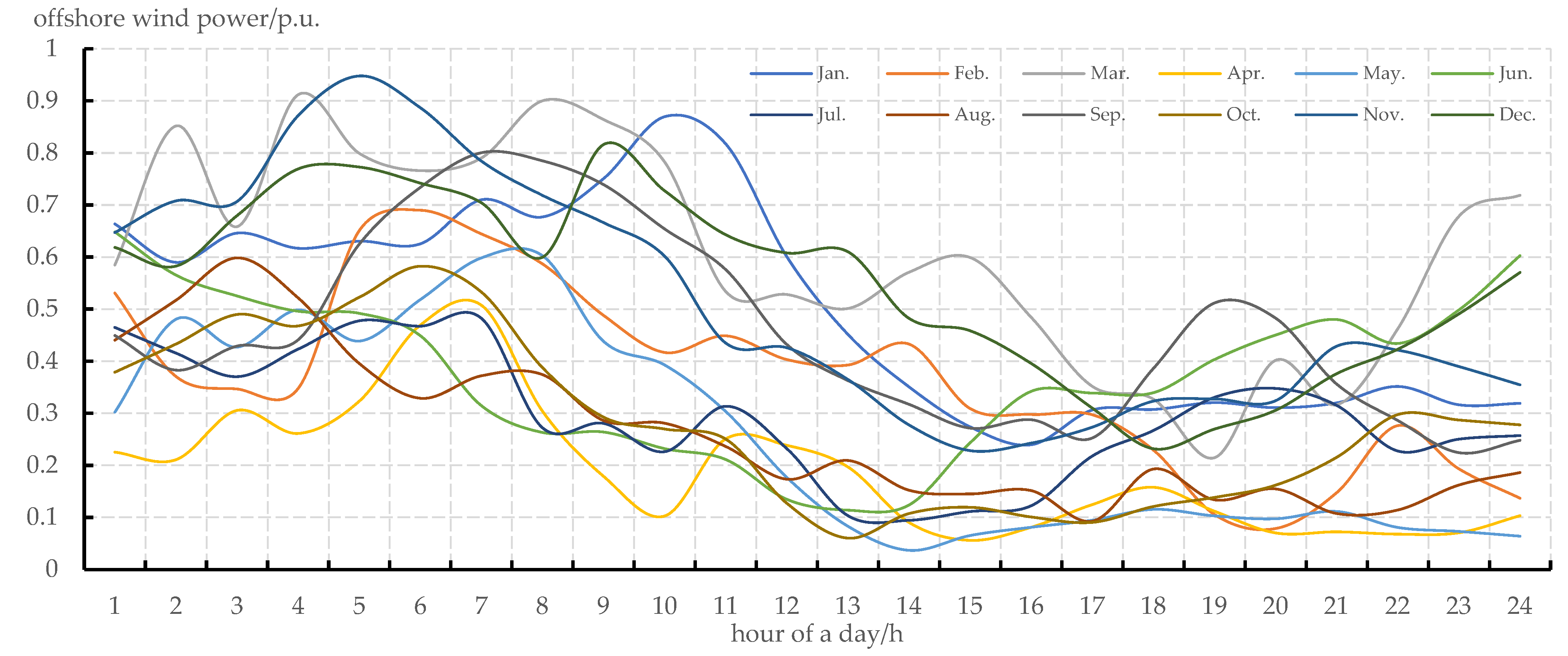

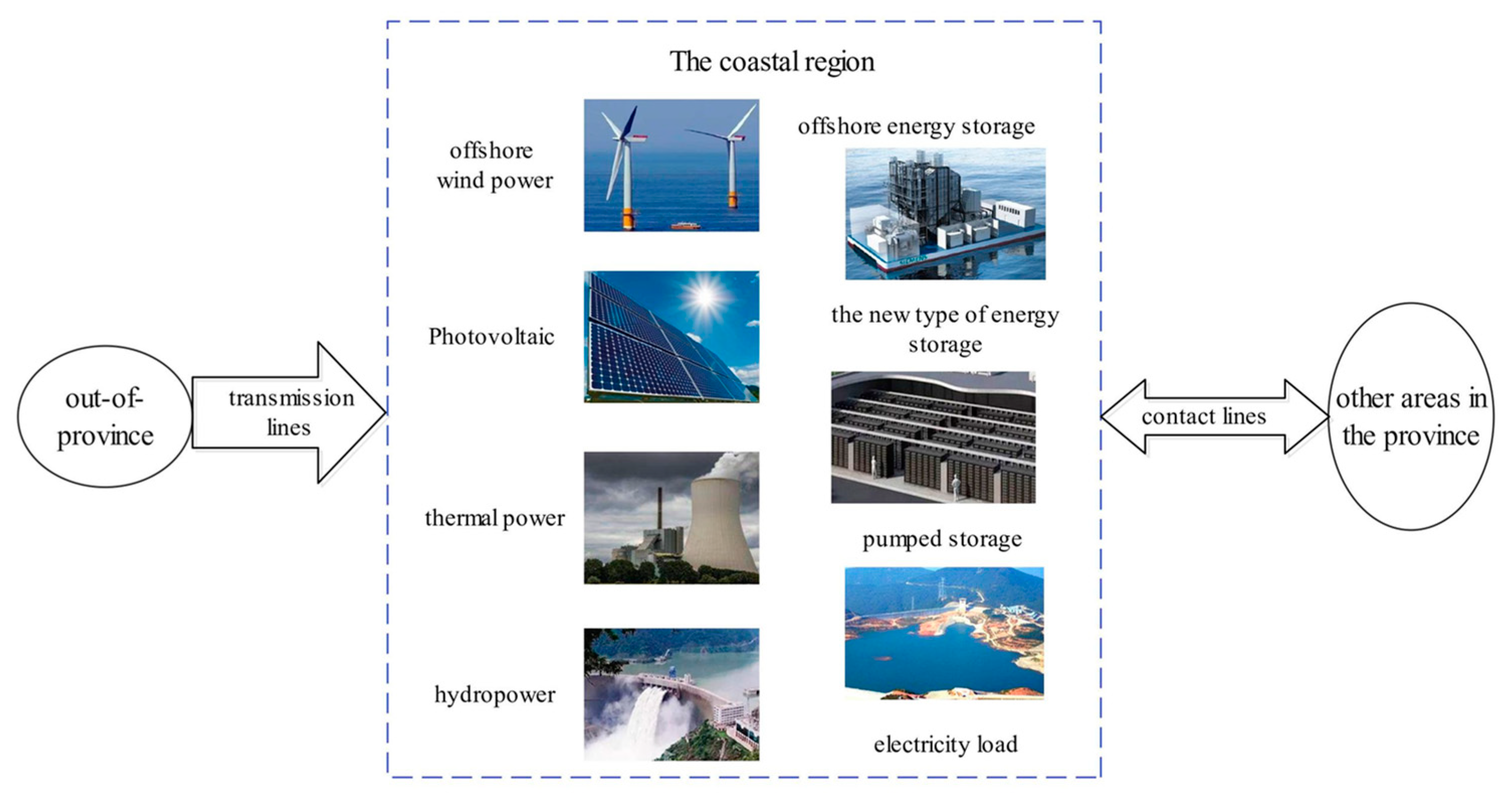

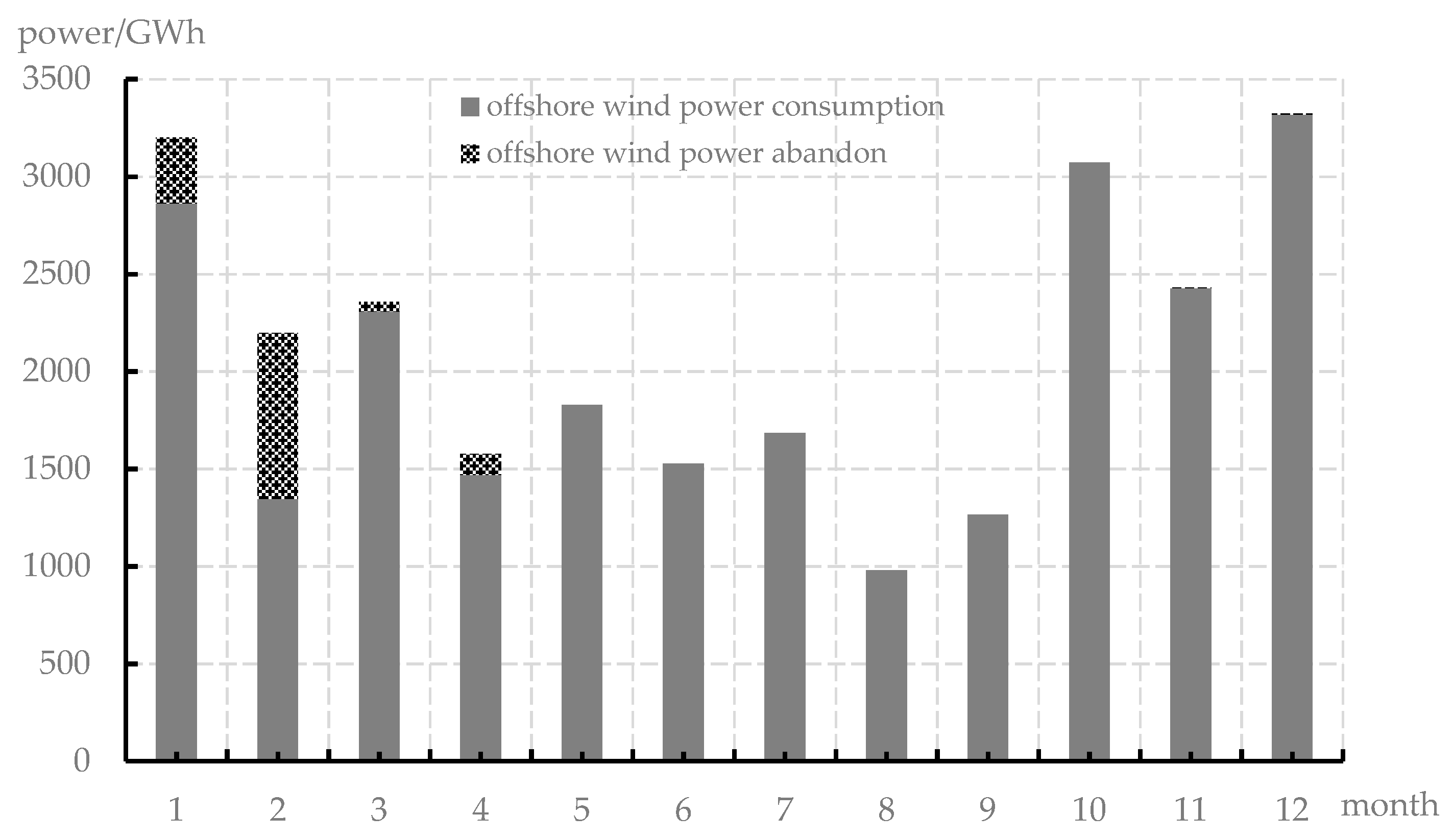
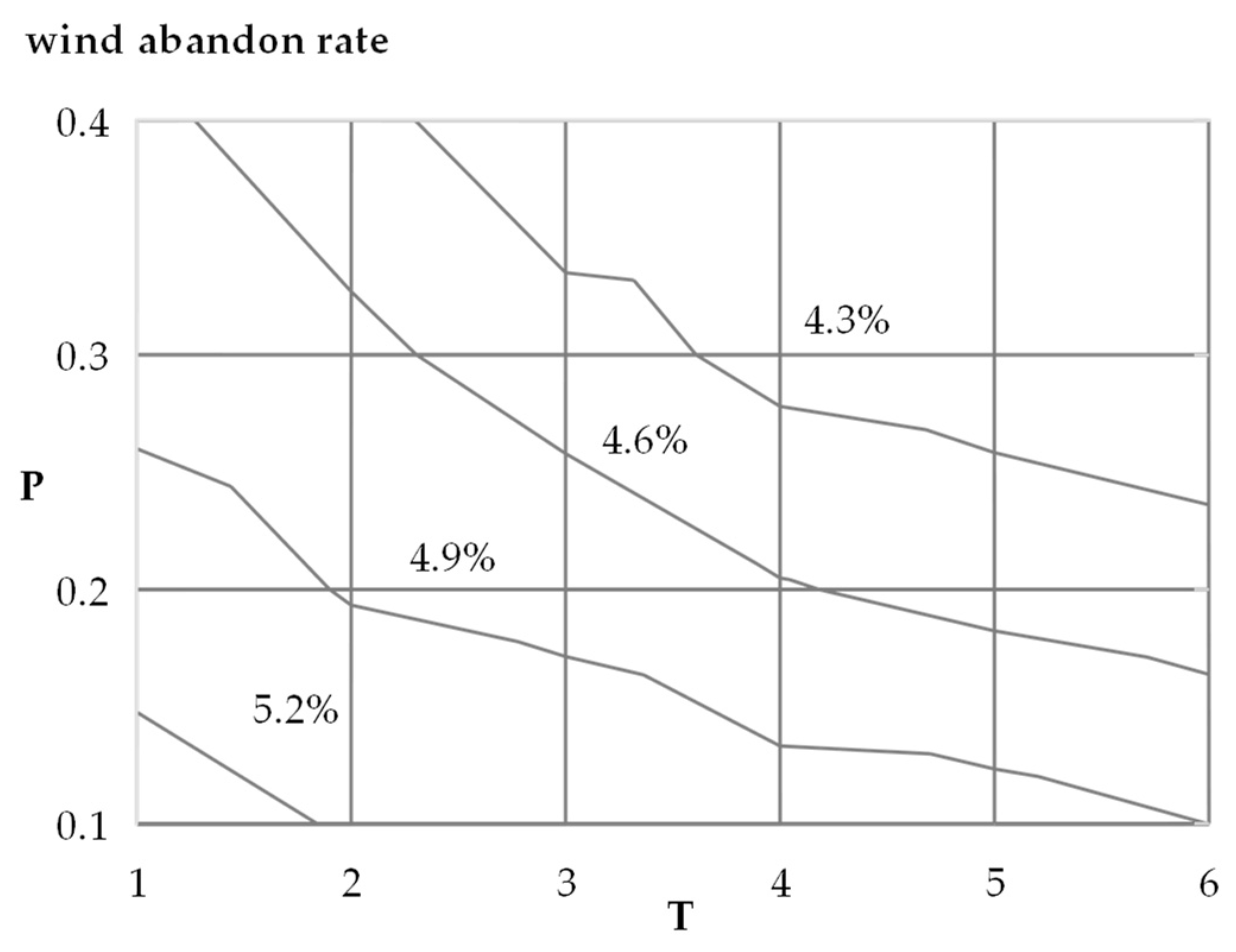
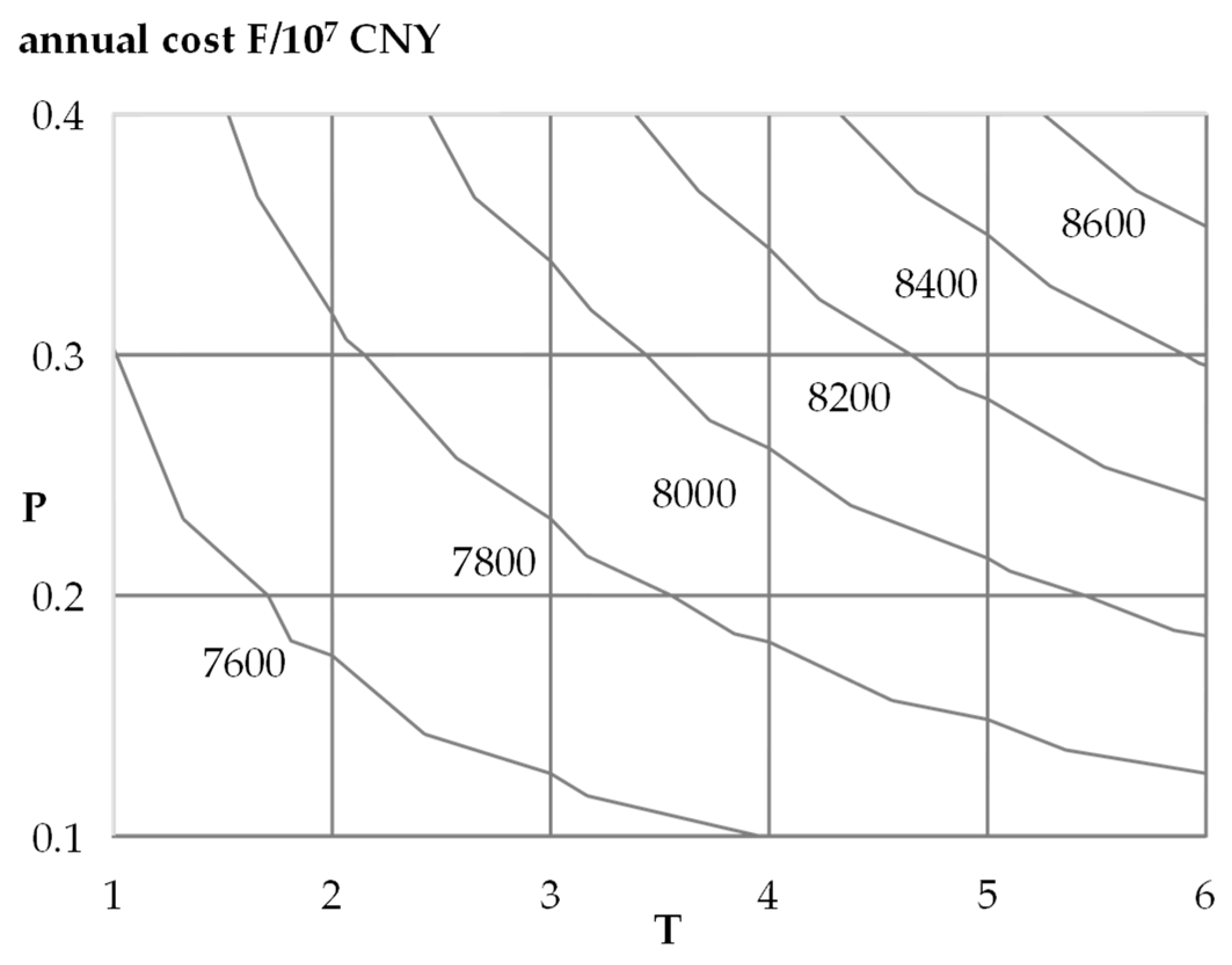
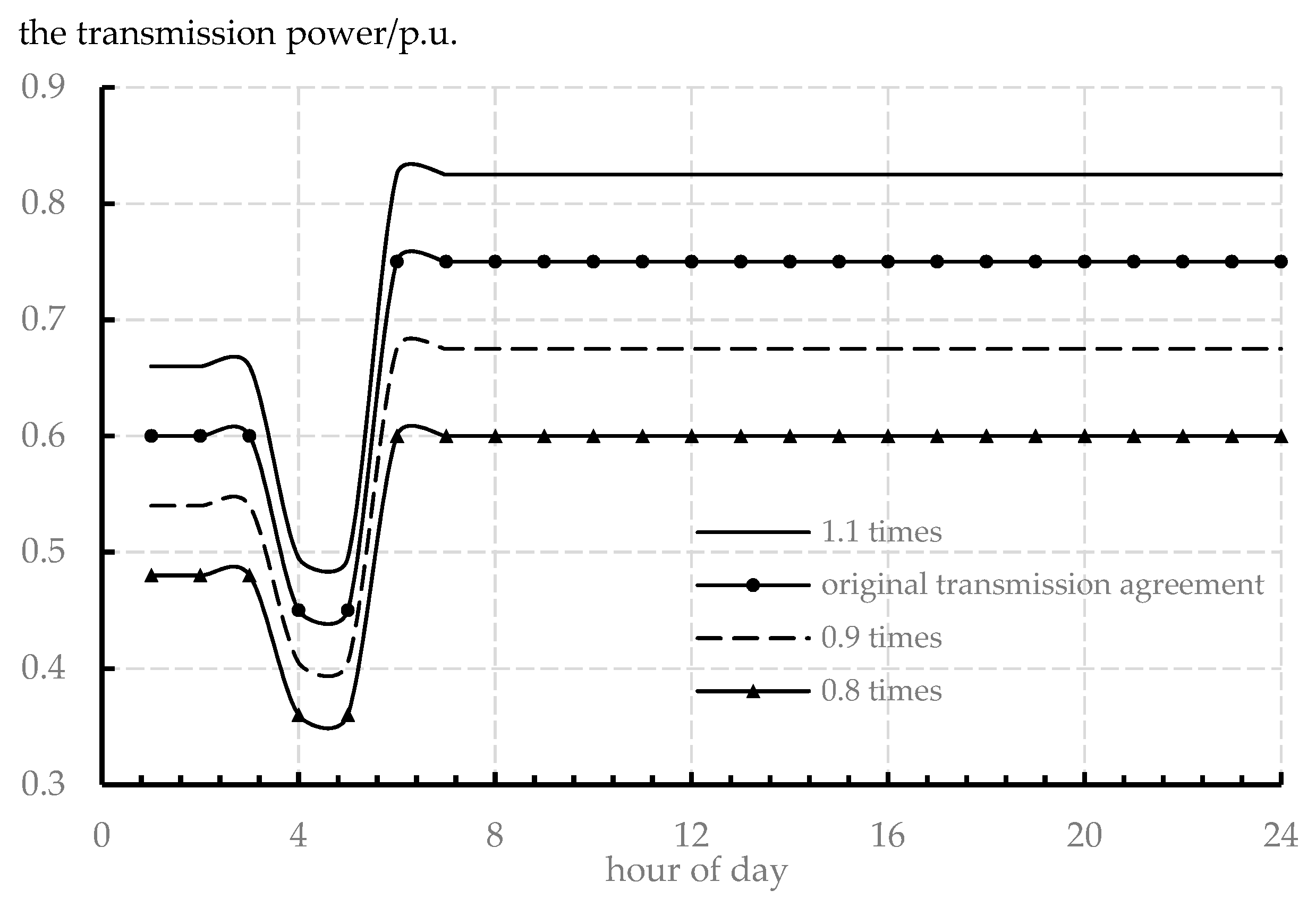
| Types | Advantages | Drawbacks | Efficiency | Application |
|---|---|---|---|---|
| pumped hydro storage | Mature technology, large capacity, low cost and long life. | The installation position has special requirements, and the conveying loss is large. | 65−75% | improve the capacity of new energy consumption; smooth the short-term fluctuations of new energy output; provide capacity reserve and power grid peak and frequency modulation services. |
| lithium battery | High energy density and fast charge and discharge. | High production cost and a special charging circuit is required to avoid overheating. | 85−98% | |
| lead–acid battery | Mature technology, easy availability of raw materials and low cost. | Low energy density and short life during deep charge and discharge. | 80−90% | |
| sodium-sulfur battery | High energy density and fast response time. | Electrode materials are flammable and there are risks in high-temperature operation. | 75−90% | |
| liquid flow battery | Large capacity, good safety and long cycle life. | High maintenance cost and low energy density. | 75−85% |
| Power Sources | Offshore Wind Power | Photovoltaic | Thermal Power | Hydropower | Pumped Storage |
|---|---|---|---|---|---|
| Capacity/MW | 9176.5 | 8220.7 | 9490 | 772.5 | 2400 |
| Type | λp (104 Yuan/MWh) | λe (104 Yuan/MW) | αg2 104 Yuan/(MW×Year) | Engineering Life (Years) |
|---|---|---|---|---|
| rich liquid lead–acid | 150 | 125 | 15 | 20 |
| lithium-ion battery | 500 | 175 | 20 | 20 |
| Configuration Ratio | 10% | 20% | 30% | 40% |
|---|---|---|---|---|
| Capacity (MW) | 917.65 | 1835.3 | 2752.95 | 3670.6 |
| (P/T) | Without Storage | 0.1 | 0.2 | 0.3 | 0.4 |
|---|---|---|---|---|---|
| 1 | 5.33% | 5.31% | 5.08% | 4.78% | 4.67% |
| 2 | 5.18% | 4.88% | 4.67% | 4.41% | |
| 3 | 5.10% | 4.82% | 4.44% | 4.04% | |
| 4 | 5.04% | 4.62% | 4.21% | 3.97% | |
| 5 | 5.02% | 4.51% | 4.15% | 4.10% | |
| 6 | 4.90% | 4.43% | 4.07% | 4.11% |
| Annual Value of Energy Storage Investment Costs | Annual Operation and Maintenance Cost of Energy Storage | Annual Operating and Maintenance Cost of Thermal Power | Annual Fuel Cost for Thermal Power Operation | Annual Total Cost |
|---|---|---|---|---|
| 72,756.1 | 13,764.8 | 1,933,090 | 5,431,380 | 7,450,990.9 |
| 107 Yuan | Without Storage | 0.1 | 0.2 | 0.3 | 0.4 |
|---|---|---|---|---|---|
| 1 | 7343.4 | 7451 | 7516.9 | 7597.8 | 7684.2 |
| 2 | 7496 | 7634.6 | 7778.3 | 7905.5 | |
| 3 | 7550.2 | 7741.5 | 7924.8 | 8118.2 | |
| 4 | 7602.2 | 7847.3 | 8096.9 | 8330.4 | |
| 5 | 7655.8 | 7953.1 | 8255.7 | 8545.5 | |
| 6 | 7708.6 | 8058.5 | 8416.0 | 8761.9 |
| Transmission Scenario | Consumption Power (GWh) | Abandoned Power (GWh) | The Abandoned Wind Rate |
|---|---|---|---|
| 1.1 times | 24,053.65 | 1387.61 | 5.45% |
| the original agreement | 24,085.76 | 1355.49 | 5.33% |
| 0.9 times | 24,119.29 | 1321.96 | 5.20% |
| 0.8 times | 24,362.69 | 1078.56 | 4.24% |
| The Total Capacity (MW) | Transmission Ratio | The Total | |
|---|---|---|---|
| The Coastal Area-Area A | The Coastal Area-Area B | Abandoned Wind Rate | |
| 6000 | 1 | 1 | 5.33% |
| 1 | 1.2 | 5.27% | |
| 1 | 1.4 | 5.23% | |
| 1 | 1.6 | 5.20% | |
| 1 | 2 | 5.13% | |
| 1 | 3 | 5.09% | |
Publisher’s Note: MDPI stays neutral with regard to jurisdictional claims in published maps and institutional affiliations. |
© 2022 by the authors. Licensee MDPI, Basel, Switzerland. This article is an open access article distributed under the terms and conditions of the Creative Commons Attribution (CC BY) license (https://creativecommons.org/licenses/by/4.0/).
Share and Cite
Yu, H.; Yang, X.; Chen, H.; Lou, S.; Lin, Y. Energy Storage Capacity Planning Method for Improving Offshore Wind Power Consumption. Sustainability 2022, 14, 14589. https://doi.org/10.3390/su142114589
Yu H, Yang X, Chen H, Lou S, Lin Y. Energy Storage Capacity Planning Method for Improving Offshore Wind Power Consumption. Sustainability. 2022; 14(21):14589. https://doi.org/10.3390/su142114589
Chicago/Turabian StyleYu, Hao, Xiaojuan Yang, Honglin Chen, Suhua Lou, and Yong Lin. 2022. "Energy Storage Capacity Planning Method for Improving Offshore Wind Power Consumption" Sustainability 14, no. 21: 14589. https://doi.org/10.3390/su142114589
APA StyleYu, H., Yang, X., Chen, H., Lou, S., & Lin, Y. (2022). Energy Storage Capacity Planning Method for Improving Offshore Wind Power Consumption. Sustainability, 14(21), 14589. https://doi.org/10.3390/su142114589







